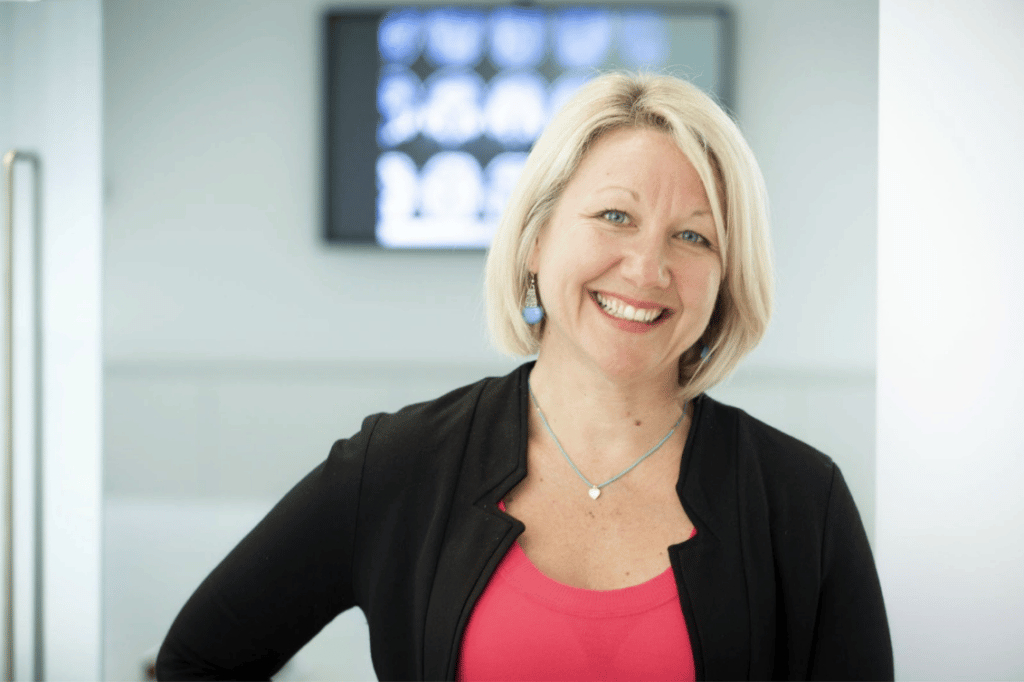
Choose Your Language:
Posted by: The Sumaira Foundation in MOG, NMO, Professional, Voices of NMO

It was over a decade ago, but I remember it like yesterday, the first patient I looked after with NMOSD. Actually, there were two of them in the same neuroimmunology clinic. Both patients had a profound effect on me and have continued to influence other decisions I have made in my career since that time. They were game changers for me, personally and professionally, and gifts I will forever be grateful for.
At that stage, I had been an immunology nurse consultant for years, primarily working in research. I also had a clinical immunology background specialising in HIV/AIDS in the late 1980s and later immunology and allergy in the 1990s.
My department’s multiple sclerosis (MS) laboratory and genetic research teams were making great strides and becoming more involved in international consortiums and alliances. I became very interested in this specialty. Setting up an MS clinic with a newly minted, young, enthusiastic neurologist, now Professor Steve Vucic, back in about 2007 was an interesting and exciting time. We had big plans for the multidisciplinary clinic to service a huge geographical area in Sydney, Australia, and an area with significant socioeconomic disadvantage. We added neuroimmunology to the clinic base. As we learnt more about other demyelinating diseases, we realised there were no services and supports available in the area for neuroimmunology patients.
Coincidentally, the immunopathology laboratory at our hospital, Westmead, began testing for NMOSD as information and testing procedures became more widely known. They were the only laboratory in Australia testing for NMOSD antibodies at this stage. They began receiving samples from all over the country as neurologists and immunologists became aware of the testing potential. The Head Scientist for immunopathology was a water cooler friend, and we started chatting about it one day, and he showed me how the procedure was done. The day he received the first positive test for NMOSD, he came racing to find me. He asked if I or any colleagues at another hospital for more information to fill him in on what it must be like for the patient and what they felt clinically.
For a laboratory scientist to show interest in understanding how the patient felt as he wrote up the test results to send…well, that was gold to me and the start of a wonderful learning collaboration. After that, we participated in several national NMOSD research studies, combining my dedication to research and NMOSD, adding to the Australian regional knowledge base in this area.
The first patient in our clinic with a confirmed diagnosis of NMOSD was actually a long-standing MS patient. She had been diagnosed many years earlier and had progressed significantly. We decided to test for NMOSD as soon as it became available. The result was positive, matching the optic and spinal presentations of MS that “Agnes” had previously experienced. Undoing a diagnosis of MS is a challenging task at the best of times, but this scenario really pushed us to our limits as a team. Agnes felt utterly overwhelmed, and we felt completely helpless. However, open, honest communication over the ensuing months and years strengthened our partnership. To this day, the dignity and grace the patient showed during this time have changed me for the better. We commenced appropriate medications, and although there was no great improvement, there was no further deterioration over the next few years when Agnes remained in my care.
Although there were not many cases like this afterward, they did sporadically occur, and I felt Agnes’s spirit guiding us as we dealt with those similar situations, always wanting to improve the quality of life for people living with NMOSD, maintaining honesty and sensitivity and not adding to the crushing load.
The other patient who was there at the same time as Agnes orchestrated my career in a different way, but just as skilfully. “Fred” had repeated, severe bouts of bilateral optic neuritis, and as the diagnostic testing had just become available, he was diagnosed with NMOSD relatively swiftly. As an electrician, the threat to self, identity, livelihood, and family was profound, and never once did Fred complain. Never. Not through the repeated rounds of plasma exchange, the long waits for the machine, the repeated high dose steroids side effects, the loss of vision. Not even when he was unable to care for his beloved wife, who was also ill. Never. His attacks were so frequent and sudden, he would sometimes be admitted without me being made aware. Still, as his vision deteriorated, he would sense when I came into the infusion/plasmapheresis unit and would always call out to say hello. I spent a lot of time holding the squidgy ball with him to pump up his veins during plasmapheresis. Well, that’s what I said I was doing, but we both knew differently. Nurses often lend strength to people when they can’t find their own; this was always my chief mission with Fred. Sometimes the novice nurses would look at me twice as I did this and raise their eyebrows.
Over the next decade, there were many more neuroimmunology and NMOSD clinics and later MOGAD clinics. I would like to think that these two patients paved the way for us to be a more inclusive, understanding, sensitive medical and nursing team. The resilience shown by NMOSD patients really is something I always wished I could bottle. The degree of personal flexibility, patience, and trust they placed in us never ceased to astound me. After a few years, we had a neurology registrar who developed an interest in NMOSD and later MOGAD. She has not stopped on her journey to add to our knowledge and treatment of these diseases. Dr. Sudarshini (Darshi) Ramanathan has rewritten for me what it means to be dedicated and committed to neuroimmunology with her constant seeking for funding, research, knowledge, and making lives better for people living with NMOSD and MOGAD. Together with Associate Professor Fabienne Brilot-Turville, Professor Russell Dale, and Professor Simon Broadley (amongst many others), Australia has such committed talent. I am just so grateful to be in this space at the same time. At MS Australia, I have been able to put forward resources and support for people with NMOSD and MOGAD as a starting base. Still, there is much more to come and many more challenges to meet.